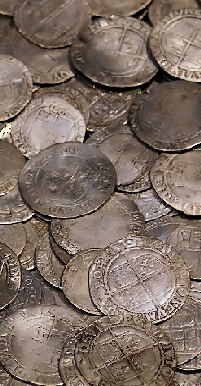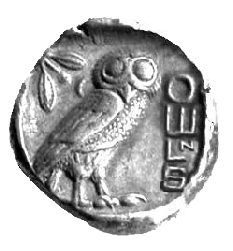
● Next Meeting Status:
Cancelled



● Host Society for the
BANS 2011 Congress
held in Southport


Tokens
For many years, tokens were the Cinderellas of the numismatic world. Not considered, either by the authorities or by collectors, as real money, they led a shadowy existence, unrecognised and uncelebrated. Pardon? Yes, uncelebrated, because tokens are in every respect the money of the people, vernacular coinage, issued to meet the needs of every day life when those in charge of the nation’s business took no interest in ‘the lower orders of the people.’
All that has now changed!

The Anglesey Halfpenny Tokens of 1790
● This paper, by Chris Leather, is an examination of the Anglesey Halfpennies of
1790, a little-

Orange Dots
There are hotspot links to other pages throughout the site, marked with orange dots
Click anywhere you see an orange dot to follow the link!

Merchant Countermarked Dollars
● 'Merchant Countermarked Dollars of the Late 18th and Early 19th Centuries' has been written by Society Member Eric C. Hodge. The desperate shortage of silver currency experienced throughout the United Kingdom at the end of the 18th and beginning of the 19th Centuries led a number of merchants and manufacturers to countermark Spanish Dollars, pieces of eight, which were readily available on the bullion market, and use these as tokens. This fascinating paper is well illustrated by photographs of some very rare pieces.

Public House Tokens
● This presentation fby Bob Lyall features a visit to the pub, as represented by
the large numbers of tokens issued by landlords and publicans throughout the UK from
the middle of the nineteenth century up to the time of the First World War. Bob
has produced a most interesting introductory guide to the types and purposes of these
tokens -

Wilkinson’s Penny Token?
● Wilkinson's Penny Token? considers which of the thirty listed varieties of the Iron Master's 1787 halfpenny tokens can reasonably be considered to be the very first. And, indeed, whether this first token might have been the elusive Wilkinson Penny!

The Colchester Tokens of 1794
● This note looks at the halfpenny tokens issued in 1794 by Charles Heath, Bay (or baize) Maker of Colchester, which show a baize weaver sitting at his loom, and a pleasing representation of Colchester Castle. Dalton and Hamer list two distinct dies for this issue, but were they right?

Where to next?

Ballindalloch Works Notes -
• Merchant countermarks on Spanish colonial dollars are known from a number of industrial concerns in the early years of the nineteenth century and, though rare, have been studied and written about for a number of years. Much less well known are the very rare issues of paper money. OWLNS member Eric Hodge presents here an account of the notes issued from the Ballindalloch cotton works, a business which had previously issued countermarked dollars.
